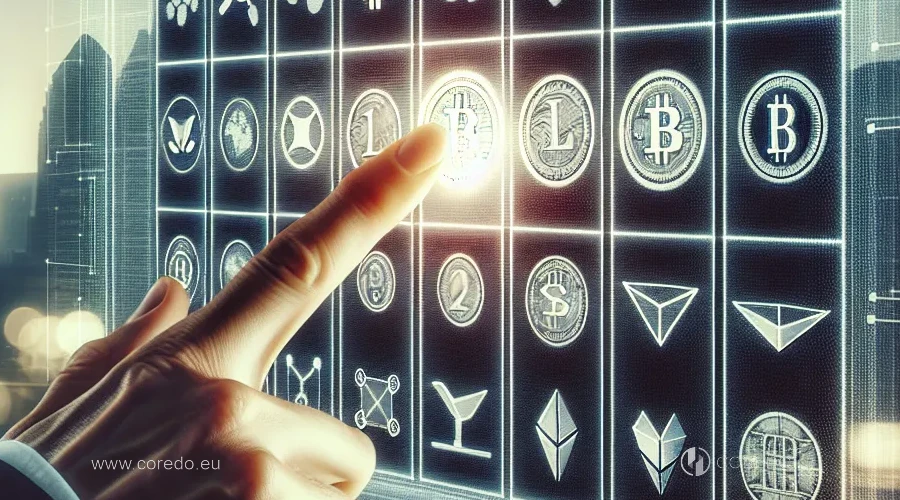Today, companies are faced not only with the need to quickly adapt to new requirements but also with building long-term compliance strategies amidst growing regulatory pressure, tightening AML compliance, and the emergence of central bank digital currencies. How can financial transparency, regulatory risk minimization, and efficiency in international settlements be ensured? Answers to these questions require not only a deep understanding of the market but also practical experience in implementing solutions across different jurisdictions.
In this article, I will explore in detail the reasons and consequences of the USDT ban in Europe, discuss how the COREDO team is helping clients prepare for the new rules, what alternatives are available to businesses, and which legal and compliance solutions truly work in practice. If you want not just to survive in the era of MiCA but to effectively scale your business, read to the end. Here you will find not only analysis but also specific recommendations, tested on real cases.
Reasons for the USDT Ban in the EU: MiCA Regulation of Cryptocurrencies and Tether Restrictions
How MiCA Changes the Rules for Stablecoins
Now any stablecoin used in the EU must meet strict criteria:
- Full disclosure of reserves and liquidity guarantee mechanisms.
- Regular independent audit.
- Transparent AML/KYC procedures and AML process automation.
- Compliance with capital and risk management requirements.
Why Tether (USDT) Does Not Meet New Requirements
Our experience at COREDO showed that many companies using USDT for cross-border transfers faced difficulties with financial due diligence and passing banking compliance procedures. As a result, using USDT is now associated with high regulatory risks and can lead to the blocking or confiscation of digital assets.
The Role of AML Compliance and Anti-Money Laundering
One of the key factors influencing the USDT ban was the tightened control over AML (Anti-Money Laundering) and the fight against money laundering through stablecoins. European regulators require not only blockchain transparency but also full traceability of operations, automation of KYC/AML, and the implementation of corporate risk management policies. Solutions developed in COREDO allow companies to integrate automated AML procedures and ensure compliance with new standards, which becomes a mandatory condition for working with any digital assets in the EU.
Consequences of the USDT Ban for Business and the European Crypto Market

The Delisting of USDT on European Cryptocurrencies: How It Happens
From 2025, the largest cryptocurrency exchanges in Europe started a phased delisting of USDT, automatic conversion of balances into alternative stablecoins (such as USDC or euro-stablecoins), and a temporary freeze of funds until compliance procedures are completed. In several cases, the COREDO team assisted clients in transitioning to new tools, helping to minimize liquidity losses and avoid the blocking of corporate wallets.
Impact on International Transfers and Corporate Settlements
How the USDT Ban Affects the P2P Market and Alternative Schemes
Legal Consequences of Holding USDT in the EU After the Ban
Alternatives to USDT in Europe: What Businesses Should Choose After the Ban

Comparison of Stablecoins: USDC, DAI, Digital Euro
| Stablecoin | MiCA Compliance | Reserve Transparency | Availability in the EU | Fees | Issuer |
|---|---|---|---|---|---|
| USDC | Yes | High | High | Medium | Circle |
| DAI | Partially | Decentralized | High | Medium | MakerDAO |
| Digital Euro | Yes | Maximum | In progress | Low | ECB |
| USDT | No | Low | Limited | Medium | Tether Limited |
USDC from Circle and the digital euro being introduced by the ECB are becoming the main alternatives for settlements and liquidity storage. DAI, as a decentralized stablecoin, partially meets MiCA but requires separate risk assessments and compliance procedures.
How to Prepare a Company for Transitioning to New Stablecoins
Transitioning to compliant-stablecoins requires not only technical migration but also revisiting corporate policies, automating KYC/AML, and integrating new blockchain solutions. COREDO’s experience shows: timely preparation, staff training, and updating internal procedures can minimize costs and ensure a seamless transition to new tools.
Implementation of Digital Euro and the Impact of CBDC on the Stablecoin Market
AML Compliance and Legal Support for Cryptocurrency Transactions in New Conditions

How AML and KYC Procedures for Crypto Companies Will Change
With the MiCA Regulation coming into force, AML and KYC requirements are significantly tightened: now every crypto asset transaction must be accompanied by automated monitoring, financial due diligence, and cryptocurrency reporting. COREDO’s practice shows that integrating modern compliance solutions not only reduces operational risks but also boosts trust from banks and investors.
Registration and Licensing of Crypto Companies in the EU After the USDT Ban
Registration of crypto companies and Licensing of services in the EU is now impossible without full compliance with the new MiCA standards, including information disclosure on beneficiaries, the introduction of compliance officers, and automation of AML processes. The COREDO team has implemented dozens of successful cases of registration and licensing of cryptocurrency services in the Czech Republic, Estonia, Slovakia, and Cyprus, helping clients navigate all due diligence stages and obtain necessary permits.
Practical Recommendations for Legal Support and Risk Minimization
To minimize risks, it is important not only to implement automated compliance strategies but also to regularly conduct an audit of corporate policies, update contracts with counterparties, and train staff on new requirements. COREDO’s solutions in the field of legal support allow companies to protect investors’ interests, ensure financial transparency, and minimize tax and regulatory risks.
Key Conclusions and Practical Steps for Business
- Conduct an audit of current crypto assets and assess the risks of holding USDT.
- Prepare for the transition to MiCA compliant stablecoins (USDC, DAI, digital euro).
- Review and automate AML/KYC procedures, implement modern compliance solutions.
- Update corporate policies on crypto asset management and integrate blockchain solutions.
- Conduct staff training and consult COREDO experts on new EU requirements.
- Review contracts with counterparties, considering new regulatory restrictions.
- Prepare cryptocurrency reporting and ensure financial transparency.
FAQ – Answers to Key Questions from Entrepreneurs and Managers
The ban will necessitate a transition to compliant stablecoins. Lack of timely migration may lead to blocked funds and sanctions.
USDC and digital euro, are most compliant with MiCA and ensure maximum transparency, DAI requires separate risk assessments.
Implement automated AML/KYC procedures, conduct a corporate policy audit, and use only licensed services.
Risks include fund freezing, fines, asset confiscation, and loss of liquidity access.
Transition to compliant stablecoins and digital euro may reduce fees and increase transparency, but will require process adaptation.
Legal consequences: from fines to criminal liability and asset confiscation.
Financial monitoring, process automation, and mandatory reporting on all operations will be strengthened.
Prospects for Cryptocurrency Regulation: Experience from the EU, Asia, and Africa
Comparison of Stablecoin Regulation Approaches in the EU, Asia, and Africa
Long-term Consequences for the Cryptocurrency Market and Investment Attractiveness
The USDT ban and MiCA implementation will lead to increased investment attractiveness of compliant stablecoins, improved market transparency, and reduced risks of financial fraud. However, the liquidity structure on European crypto exchanges will change, and companies unprepared for new requirements will face restricted market access and sanctions.